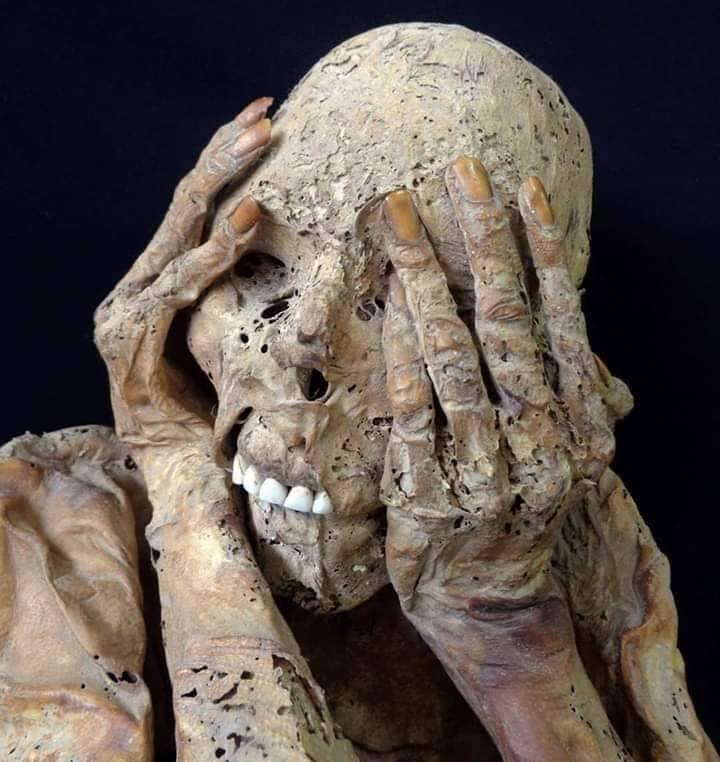Discovery and Cultural Context
The Paracas Necropolis was uncovered in 1927 by Julio C. Tello, often hailed as the father of Peruvian archaeology. Located in the arid Chincha Valley on Peru’s southern coast, this burial site is associated with the Topará culture, which thrived between 500 BC and 200 AD. The site provides crucial insights into a pre-Incan society that significantly influenced later Andean civilizations.
The Paracas people were known for their sophisticated society, marked by advanced textile production, elaborate burial customs, and a spiritual connection to the afterlife. Their influence is evident in the artistic and cultural traditions that persisted into the subsequent Nazca civilization.
Structure of the Necropolis
The Paracas Necropolis consists of a network of underground burial chambers. These chambers, often shared by extended families or clans, were used over multiple generations, reflecting the Paracas people’s emphasis on lineage and ancestor veneration. Some chambers held as many as 400 mummies, making this one of the most complex burial sites of its time.
The reuse of tombs over centuries reveals a cyclical burial practice. New burials were often added alongside older ones, showing the community’s enduring reverence for their ancestors and the importance of familial continuity.
The Paracas Textiles: A Legacy of Craftsmanship
Among the most remarkable finds at the site are the textiles, often referred to as “Paracas Blankets” or “Paracas Mantles.” These burial shrouds were woven with extraordinary precision and adorned with vivid, multicolored patterns. The textiles feature intricate designs depicting deities, animals, and geometric motifs, many of which hold symbolic meanings tied to Paracas cosmology.
The techniques employed by Paracas weavers demonstrate their mastery of dyeing, spinning, and embroidery. Natural dyes extracted from plants, insects, and minerals allowed them to create vibrant hues that have endured for over two millennia. These textiles not only served as burial garments but also conveyed status and spiritual beliefs, offering a glimpse into the values and hierarchy of Paracas society.
Significance of the Mummies
The mummification process used by the Paracas people was meticulous, involving the wrapping of bodies in multiple layers of textiles, often accompanied by offerings such as ceramics, food, and tools. The dry desert climate played a crucial role in preserving both the mummies and the textiles, allowing modern researchers to study them in exceptional detail.
Analysis of the mummies has revealed insights into the Paracas people’s diet, health, and social structure. For instance, cranial deformation—a practice in which the skulls of young children were intentionally shaped—was common among the elite, signifying social status and possibly marking tribal affiliations.

Cultural and Historical Impact
The Paracas Necropolis is more than a burial site; it is a testament to the cultural sophistication and artistic achievements of the Paracas civilization. Their innovative textile techniques and burial practices had a lasting impact on subsequent Andean cultures, including the Nazca. The Nazca, in particular, adopted and expanded upon Paracas artistic traditions, integrating them into their iconic geoglyphs and pottery.
Preservation and Modern Relevance
Today, many artifacts from the Paracas Necropolis are housed at the National Museum of Archaeology, Anthropology, and History of Peru in Lima. These items continue to captivate scholars and visitors alike, serving as a bridge to a civilization that flourished long before the rise of the Inca Empire.
Ongoing research into the Paracas Necropolis sheds light on broader themes in Andean history, such as the development of complex societies, the role of art in religious expression, and the interplay between environment and cultural adaptation.
Conclusion
The Paracas Necropolis stands as a cornerstone in the study of ancient Andean civilizations. Its underground chambers, mummies, and textiles offer invaluable insights into the spiritual and artistic traditions of the Paracas people. This site not only enhances our understanding of pre-Incan Peru but also underscores the enduring legacy of a culture that laid the groundwork for some of the most celebrated achievements in Andean history.

